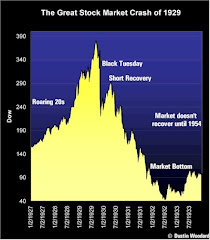I read with interest an article about the head of the CPP plan touring on a Public Relations campaign.
Canada Pension Plan at $130B and climbing
The writer commented that at $129 Billion it is the largest the CPP has ever been and it is expected to grow to $464 Billion. This plan is for the benefit of 18 million Canadians? This equals a little over $7,000 for each working Canadian taxpayer.
I challenge you to think about this ...
There are 3.6 million public sector employees in Canada. The assets of their taxpayers funded pension funds are valued in excess of $800 Billion. This equates to over $200,000 for each working public sector employee in Canada.
Around $30 Billion flows into the government employee pension funds annually.
How much were the annual contributions into the CPP plan?
The CPP is expected to grow to $464 Billion in 20 years.
What is the expected future growth of the public sector pension plans?
Both the CPP and the public sector pension plans are funded by the taxpayer. Yes I know I will get lots of complaints that the employees in the public sector fund their own plans. But they fund only a small portion.
You may want to consider an analysis and compare the CPP with the public sector pensions. The conclusion may change from ...
The writer commented that at $129 Billion it is the largest the CPP has ever been and it is expected to grow to $464 Billion. This plan is for the benefit of 18 million Canadians? This equals a little over $7,000 for each working Canadian taxpayer.
I challenge you to think about this ...
There are 3.6 million public sector employees in Canada. The assets of their taxpayers funded pension funds are valued in excess of $800 Billion. This equates to over $200,000 for each working public sector employee in Canada.
Around $30 Billion flows into the government employee pension funds annually.
How much were the annual contributions into the CPP plan?
The CPP is expected to grow to $464 Billion in 20 years.
What is the expected future growth of the public sector pension plans?
Both the CPP and the public sector pension plans are funded by the taxpayer. Yes I know I will get lots of complaints that the employees in the public sector fund their own plans. But they fund only a small portion.
You may want to consider an analysis and compare the CPP with the public sector pensions. The conclusion may change from ...
Relax Frederictonians, your Canada Pension Plan benefits still will be there when you retire and for your children when they retire.
Part of the analysis might include the question of asset ownership. The total public assets for bridges, roads, ports airports etc. in Canada as estimated by Statscan is around $275 Billion. Less than one half of the assets that are in only the public sector pension plans.
It appears that slowly the pension funds in Canada will be devouring the infrastructure of the country. You note the purchases of MacQuarrie and ownership in over 500 Canadian companies. At one time this would have been called socialism; the country's factors of production being owned by the government itself.
It is interesting the majority interest in Skype. The public sector pensions restrict themselves almost exclusively to monopoly markets. They obtain 20% to 25% returns at the expense of taxpayers everywhere. If it is not a monopoly market, they have the assets to quickly buy up enough to make it a monopoly. Take commercial real estate in Canada, it is almost exclusively owned by pension funds.
Question the source of the information that was given. Do you think Denison is relying on the CPP plan for his retirement or is sheltered in one of the gold-plated public sector plans.
References:
References:
http://www40.statcan.gc.ca/l01/cst01/govt62a-eng.htm
http://www.statcan.gc.ca/pub/13-605-x/2008002/t/5213171-eng.htm - Note the GCRA are for the super sized pensions in the public sector.
http://www.statcan.gc.ca/pub/13-605-x/2008002/t/5213171-eng.htm - Note the GCRA are for the super sized pensions in the public sector.
Bill Tufts
Fair Pensions For All



Nice Article. Thanks for the details and the link u provided. Please keep it up. Again thanks.
ReplyDeletethemoneyparadise